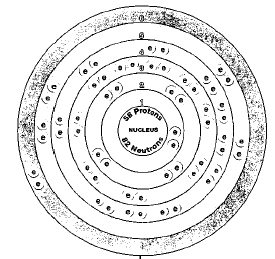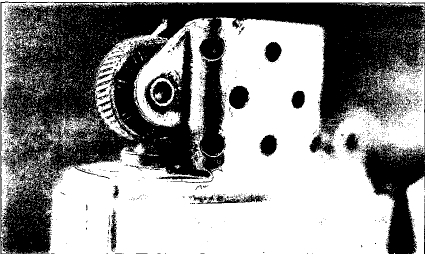CERIUM


Overview
Cerium is the most abundant of the rare earth metals. Rare earth metals are the elements in Row 6 of the periodic table. The periodic table is a chart that shows how chemical elements are related to each other. The rare earth elements are not really rare. In fact, cerium ranks about number 26 in abundance among elements found in the Earth's crust.
Cerium is a gray metal that easily reacts with other elements. It is used in making a number of different alloys, in the production of many kinds of specialty glass, and in the chemical industry.
Discovery and naming
Cerium was the first rare earth element to be discovered. It was isolated in 1839 by Swedish chemist Carl Gustav Mosander (1797-1858). Mosander was studying a new rock that had been discovered outside the town of Bastnas, Sweden. Mosander named the new element cerium, in honor of the asteroid Ceres that had been discovered in 1801.
SYMBOL
Ce
ATOMIC NUMBER
58
ATOMIC MASS
140.12
FAMILY
Lanthanide (rare earth
metal)
PRONUNCIATION
SEER-ee-um
Credit for the discovery of cerium is sometimes given to scientists who studied the black rock of Bastnas earlier. These scientists included Swedish chemists Jöns Jakob Berzelius (1779-1848) and Wilhelm Hisinger (1766-1852) and German chemist Martin Heinrich Klaproth (1743-1817). It would be difficult to say that one or another of these chemists was the one and only discoverer of cerium.
The substance these scientists discovered was not a pure element but cerium combined with oxygen and other elements. Pure cerium was not produced for another 70 years.
Physical properties
Cerium is an iron-gray metal with a melting point of 795°C (1,460°F) and a boiling point of 3,257°C (5,895°F). It is ductile and malleable. Ductile means capable of being made into thin wires. Malleable means capable of being hammered into thin sheets. Cerium's density is 6.78 grams per cubic centimeter. It exists in four different allotropic forms. Allotropes are forms of an element with different physical and chemical properties.
Chemical properties
Cerium is the second most active lanthanide after europium. Lanthanides are the elements with atomic numbers 58 through 71. Cerium reacts so readily with oxygen that it can be set on fire simply by scratching the surface with a knife. It also reacts with cold water (slowly), hot water (rapidly), acids, bases, hydrogen gas, and other metals. Because it is so active, it must be handled with caution.
Occurrence in nature
The most important ores of cerium are cerite, monazite, and bastnasite. It is thought to occur in the Earth's crust with a concentration of 40 to 66 parts per million. This makes cerium about as abundant as copper or zinc.
Isotopes
Four naturally occurring isotopes of cerium have been discovered: cerium-136, cerium-138, cerium-140, and cerium-142. The last of these isotopes is radioactive. Isotopes are two or more forms of an element. Isotopes differ from each other according to their mass number. The number written to the right of the element's name is the mass number. The mass number represents the number of protons plus neutrons in the nucleus of an atom of the element. The number of protons determines the element, but the number of neutrons in the atom of any one element can vary. Each variation is an isotope. A radioactive isotope is one that breaks apart and gives off some form of radiation.
More than a dozen radioactive isotopes of cerium have also been made. Radioactive isotopes are produced when very small particles are fired at atoms. These particles stick in the atoms and make them radioactive. None of the radioactive isotopes of cerium has any commercial use.
Extraction
Cerium is prepared by methods similar to those used for other lanthanides.
It is obtained by passing an electric current through cerium chloride:
or by heating calcium metal together with cerium fluoride:
Uses and compounds
Cerium metal and its compounds have a great variety of uses, many in the field of glass and ceramics. Cerium and its compounds are added to these materials to add color (yellow), remove unwanted color, make glass sensitive to certain forms of radiation, add special optical (light) qualities to glass, and strengthen certain kinds of dental materials.
Important new applications are being found for cerium lasers. A laser is a device that produces bright light of a single frequency or color. Cerium lasers contain a crystal made of lithium, strontium, aluminum, and fluorine, to which a small amount of cerium is added. A cerium laser produces light in the ultraviolet region. Ultraviolet radiation is not visible, but it is very similar to the blue and violet light our eyes can see. Cerium lasers are used to search for ozone and sulfur dioxide, two air pollutants, in the atmosphere.
Cerium reacts so readily with oxygen that it can be set on fire simply by scratching the surface with a knife.
Cerium compounds are also used in making phosphors. A phosphor is a material that shines when struck by electrons. The color of the phosphor depends on the elements of which it is

Cerium is also used in catalytic systems. A catalyst is a substance used to speed up or slow down a chemical reaction. The catalyst does not undergo any change itself during the reaction. Compounds of cerium are used in the refining of petroleum. They help break down compounds found in petroleum into simpler forms that work better as fuels.
Another application of cerium (in the form of cerium oxide) is in internal combustion engines, like the one found in cars. Adding cerium oxide (CeO 2 ) to the engine's fuel helps the fuel burn more cleanly, producing fewer pollutants.
Cerium lasers are used to search for ozone and sulfur dioxide, two air pollutants, in the atmosphere.
A number of alloys contain cerium. An alloy is made by melting and mixing two or more metals. The mixture has properties different from those of the individual metals. Perhaps the best known alloy of cerium is misch metal. Misch metal contains a number of different rare earth elements and has the unusual property of giving off a spark when struck. It is used, for example, in the flint of a cigarette lighter.
Cerium oxide is also used as an abrasive. An abrasive is a powdery material used to grind or polish other materials. Cerium oxide has replaced an older abrasive known as rouge for polishing specialized glass, such as telescope mirrors.
Health effects
There is no evidence that cerium compounds pose a health hazard to humans.